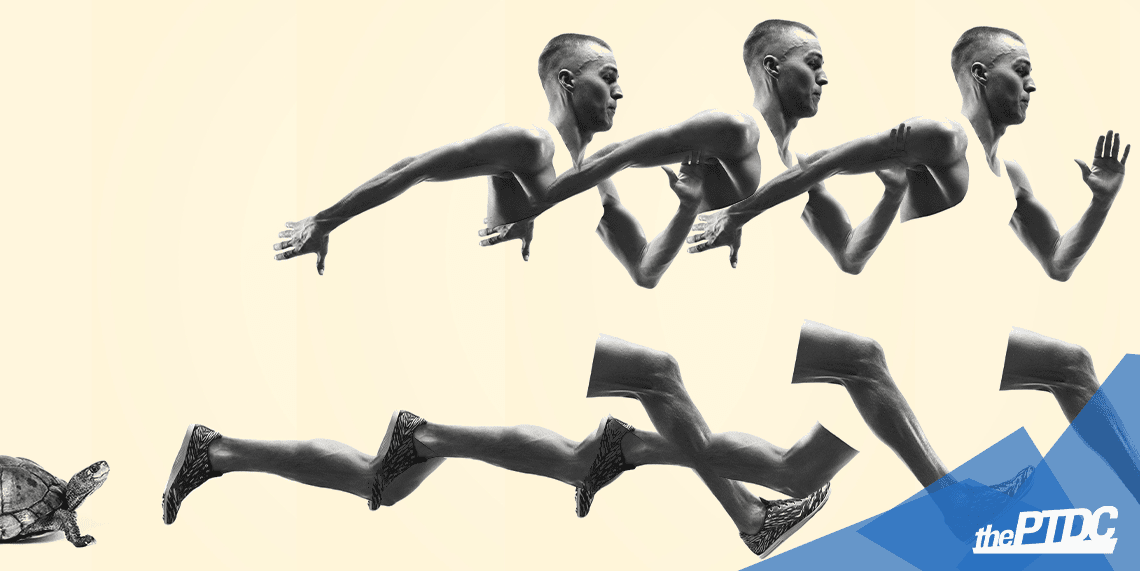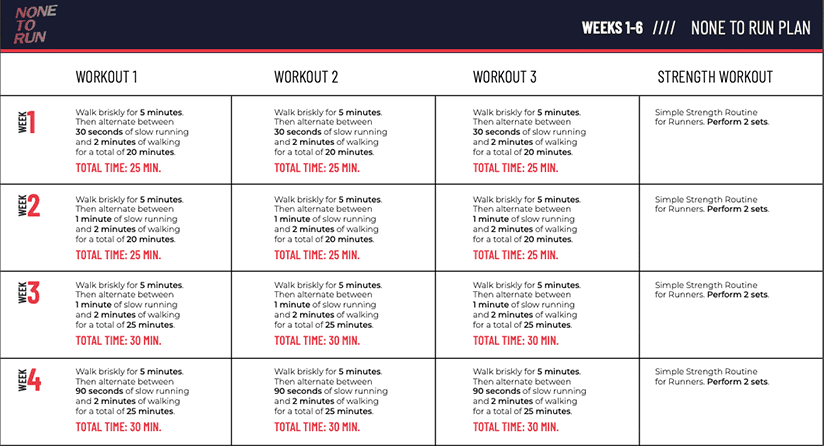There’s something about training beginner runners.
They’re an underserved market, for one thing. And in many ways, it’s more about habits and motivation than actual running. Inertia is a powerful thing, and building momentum takes time.
Helping beginners make that mindset shift intrigues me. Which is why I earned my RRCA distance-running coach certification and eventually developed a 12-week training plan called None to Run.
It really resonated with people. At first, it was just a PDF they could download for free.
But in March 2020 I released the N2R app for iOS devices ($5.99 per month; $39.99 annually in the U.S.). So far, the app has about 7,000 subscribers, and there are 10,500-plus members in the Facebook group.
Transforming someone with little or no running experience into someone who enjoys and even excels at the sport is a challenging task. And there’s a knack for doing it virtually versus in-person that I’d like to share with you today.
Stage 1: Assess for success

Gather as much background as you can on the client. What, if anything, have they been doing for fitness in general and running in particular?
It’s also important to find out why they want to run a 5K and what their goals are.
Maybe they want to get fit for health reasons. Maybe they want to lose a few pounds. Or maybe they just want to be a role model for their children (I hear that one a lot).
Once you have a rough idea of where they’re at and where they want to go, gauge their limitations. Ask:
How much time do you have to train?
How many days per week can you allocate to running?
Where do you live?
When will your event be held?
Location is important—it’s daunting to start training if it’s winter in Saskatchewan or summer in Arizona. They may need to take it indoors.
When someone has no previous running experience, I’ll give them an assignment: Go out and (without killing yourself) try to run continuously for 10 minutes on a flat surface.
Then I’ll have them report the following:
- how long they were able to last,
- what hurt,
- what felt good, and
- what their perceived level of effort was on a 1-to-10 scale.
That’s all the information you need to structure an effective training program.
A big temptation for online trainers at this stage is to gather more data than is necessary. Sure it’s useful if you know your client’s heart rate or can analyze their running form on a video, but you don’t want to get too far down in the weeds and over-coach.
For most new runners, perceived effort is a more useful gauge of intensity than wearing a heart rate monitor—because it’s easier to understand.
And you don’t want to tweak running form in the beginning because technique naturally improves and becomes more efficient over time. If you meddle with form too early, you risk injury.
So resist the urge to over-coach. Don’t overwhelm your client.
Let the joy that is inherent to running and the satisfaction of improvement provide most of the motivation.
Stage 2: Build a slow-progression program

If you want to turn clients into fit, healthy runners, here’s the key: You have to slow them down.
People want to reach their goals fast, but that won’t serve them well.
Lots of running-related injuries can happen when someone is starting out, and they’re really hard to get rid of, so it’s better to progress conservatively.
My mantra:
Progress so slowly that it hurts.
Remember, it’s better to achieve goals later than not at all.
There are two unique principles behind my plan:
1. Prescribe time, not distance.
Instead of having clients do miles, I have them do minutes.
Beginners often feel pressured when running for distance, which creates bad running habits and can lead to burnout, injury, and less enjoyment.
The body doesn’t care how far it’s gone; it only knows how long it’s been upright and moving.
I also don’t always follow the age-old guideline of increasing the training volume 10 percent per week.
Some weeks are repeated, and I never encourage running on consecutive days when starting.
2. Don’t forget strength and mobility.
Most beginners don’t have the lower-body strength for running.
General exercises such as bodyweight squats and lunges will better prepare them and minimize injuries.
Five to 10 minutes of strength training per week, either on rest days or after workouts (never before) is all that’s needed. In fact, I’ve found it to be more beneficial for new runners than stretching.
You can apply these principles to write your own program, or feel free to use mine. (All I ask is that you credit None to Run.)
Click to download the full 12-week program.
Stage 3: Watch for these warning signs

Red flag #1: Persistent pain
When someone complains of a little injury or something that’s bugging them, I always ask:
Does it hurt more as your run progresses, or does it hurt less?
If it hurts more, advise them to seek medical treatment.
Red flag #2: “I feel amazing!”
Sometimes new runners will tell me they feel so good that they’ve ramped up their volume or started running on rest days.
When I hear that I immediately say:
“No, no, no. The reason you’re feeling so good is because you’re taking it so slow. The cardiovascular system often develops faster than the musculature system. To minimize the risk of injury, don’t change anything.”
Red flag #3: General fatigue
Feeling tired on runs or struggling to keep a pace that used to be easy is a sign it’s time to step back.
Ask your client if there’s anything going on in their lives that may be affecting their performance and scale back as necessary.
Stage 4: Keep your client motivated

I’ve found that motivation among beginner runners typically ebbs a bit around week 8 or 9 of my 12-week plan.
This is natural, but it’s an opportunity for you to step in and keep them on track.
Share a favorite playlist or podcast, suggest driving to a different location and running from there, or tell them to take it outside if they’ve been on a treadmill (or vice-versa).
If you’re training a number of beginner runners, you should absolutely offer a social media component.
There are over 10,500 people in the None to Run Facebook group. The community aspect is super motivating—people sharing stories, asking questions, lending advice. You have to moderate things daily, though, to make sure it remains a positive place where people feel comfortable sharing and being vulnerable.
Of course, the best way to motivate someone is the simplest: Just give them a virtual pat on the back and say,
“Listen, you’re doing a great job. I can see from your workouts that you’re progressing. Keep up the great work!”
Stage 5: Celebrate!
There are two facets to this.
First, strive to convince your clients that the race, the event, the 5K, or whatever it is they’re training for is a celebration in itself.
There are no expectations. Do it for fun. Enjoy the atmosphere. Have an awesome time.
Second, celebrate with them by sending some kind of reward. When someone in our Facebook group says they’ve finished the plan, I’ll often chime in and say, “Congratulations! I’d love to send you a None to Run T-shirt. If you’d like one, send me an email with your size and shipping address.”
People love that. And since they’ve had success with your program and now have this T-shirt, they’ll naturally tell their friends how they earned it, what an awesome trainer you are, and you’ll be on your way to helping more people become fit, healthy runners.











